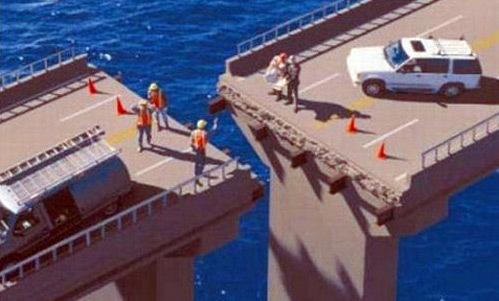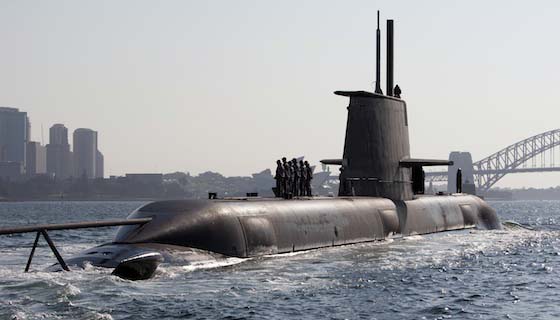‘Australian Financial Review’ of 28 July 2017.
Why is it that large projects continue to be undertaken and to repeat the same mistakes of all those which went before them, that is the question? Flyvbjerg explains the recurrent attraction of mega-projects along four intersecting and interacting vectors: they are technological challenges, they are politically attractive, they create a constituency of profiteers, and they are aesthetic.
Mega-projects by definition have not been done before and so engineers, designers, builders, technologists, find them stimulating, ready and willing to give it a try. Look at the sails of the Sydney Opera House, and remember they were made and fitted by hand, long before lasers.

The political attraction is in the grand project that will define an administration, or even an era. Think of the those pyramids in Ghiza.
The profiteers are the facilitators, the bankers, consultants, fixers, the lobbyists, financiers, and all those others in the middle, who do not build anything but without whom nothing can be built. Then there are the builders themselves, the construction firms and their employees, and their insurers and suppliers. ‘Profiteers’ is my word, not his.
Finally, there is the aesthetic dimensions anticipated in the completed project by designers, artists, and users.
Despite all of this impetus many, many mega-project go awry. Before getting to that, a few definitions. A mega-project is big, over a one billion USA dollars. For examples, in addition to those passed by above, consider the Canadian Firearms Registry, the Big Dig in Boston, Channel Tunnel, Viaduc de Millau, Lake Pontchartrain Causeway, North Sea Protection Works in the Netherlands, and that black airport in Montreal, Mirabel.
The most common failure of such projects is cost overruns, some of which are truly astonishing, like the Sydney Opera House that came in — sit down, Mortimer— 1,400% over budget in real terms.
The second most common failure is missing the target completion deadline and running on and on, and here I think of another example close to home, though it may not have hit the billion dollar price tag, the OPAL public transport card system, a three-year project that took fifteen years before the first tap. (OPAL users will get it.)
The third most common failure is to return the benefits asserted for the project. Investors lose a lot of other people’s money in mega-projects, even in the private sector, e.g., the Chunnel. Every rider on EuroStar is still being subsided by the financiers who invested the pension funds they manage into that hole under the water while paying each other six-figure bonuses for their wit.
With these failures, other matters recede, but there are also failures regarding the environmental impact of mega-projects. Is it any wonder that the public is cynical about the projections and promises made?
The failures are so numerous and catastrophic that one wonders why we keep doing it. It certainly undermines confidence in the financial projections, the pace of construction, that management of labour, the environmental impact assessments, projected use and earnings, the alleged rate of return on investment, not solving the problem the project was supposed to solve, and more. The litany of such failures makes fascinating, if morbid reading.
Yet this reader wondered if that was the whole story. Impressive though the data in Flyvbjerg’s study is, much has been omitted. For a start the study concerns only failures, and not successes, and there is a long list of mega-projects on Wikipedia that seem to be successes, again including some close to home like the desalination plants in New South Wales and Victoria which proceeded so smoothly no journalist could make up a story about either of them. The unerring eye of hindsight on display in this account is like Barbara Tuchman’s successful but superficial ‘The March of Folly’ (1984).
What foresight distinguishes successful mega-projects from unsuccessful ones? No enlightenment comes from this account.
Flyvbjerg also omits one crucial constituency in his rather jaded four part explanation: The public. When commenting on the political attraction of mega-projects and the interest of the profiteers, Flyvbjerg’s explanation is cynical self-interest. That is why I used the work ‘profiteers.’ Hmm. Doubtless a factor, but generative or decisive?
What is the political benefit from the colossal failure? If failure is so likely, why take the risk? Maybe that caution explains the long delays with the Opal Card.
Those who stand to profit may also have more complex motivations about the challenges and competitive opportunities. Ready as I am to disparage others, preferably those about whom I know nothing, I reserve judgement on this.
There is a missing player in the epic of mega-projects and that is the general public. The mega-project can create, stimulate, and capture the public imagination which the media then reflects and amplifies. It would be a brave political leader, pension fund manager, or designer, to reject the public pressure that can be conjured for such projects. Another local example was the millennial Orange Grove project in Sydney that had a considerable popular following. A state government minister who rejected that development because of skepticism about the projections would have be crucified by the same journalists who lit the fires when the project fell.
The public is missing in another respect, as an opponent of some mega-projects. Surely one reason for the costs of the Big Dig in Boston was sustained and calculated strategic and tactical opposition of several publics. The bill for the litigation must have been enormous. Indeed public opposition has stymied many mega-projects, e.g., a third Sydney airport.
 Bridge-building Italian style.
Bridge-building Italian style.
In this short newspaper reprint Flyvbjerg omits that recurrent five-ring circus of the Olympics which illustrate the popularity of mega-projects regardless of the cost over-runs. Olympic bids are wildly popular and hosting the Olympics is even more popular to all, but the die-hard spoilsports like me. One of the masterminds of the Sydney Olympics once privately said it was worth the money for the lift it gave to public awareness and pride.
Nor does this analysis include defence projects or military planning where there are many failures to be sure, but there have also been some spectacular success in projects the complexity of which dwarf even the largest mega-projects. Note that NASA did put astronauts on the moon and bring them back. These examples suggests plans and forecasts can work. Why sometimes and not others?
Defence projects are legendary for cost over-runs and that is as true in Australia as anywhere else. Those Collins Class submarines are an object lesson, and I hope PhD students are examining the details. In order to mobilise the public support to spend money on competitive submarines, the government had to insure that the boats were built in Australia and that the work was spread around the country, so that there was an informal coalition of parliamentarians and community groups who supported the project because of the money to be spent in their electorates. None of that is cost efficient in the short term, and probably not in the longer term. But it is political necessity. Ditto the financing has to be distributed to create support.
 A Collins class submarine in Sydney Harbour
A Collins class submarine in Sydney Harbour
At a formal dinner once I sat next to a Royal Australian Navy officer who was in submarines, and inevitably I asked him about the Collins submarines. He had a lot to say about how excellent they were, but when I asked him about the cost over-runs and missed completion dates, he said that it always happens. [Pause.]
If so, then why were not such costs and delays built into the original planning, just as the builder who did our kitchen had an allowance for extras in money and time to cover the unforeseen? If foreseen, then why not integrate an allowance for the unexpected into the process? That was my question. His line by the way was the official navy line at the time as subsequent research showed. ‘No big deal, it always happens.’ If so….!
Much of the four sublimes, as Flyvbjerg calls them, are generated, empowered, and enabled by the public appetite for such projects, and according to the fount, Wikipedia, many are in fact successful. That term ‘sublimes’ grates on this reader. It seems forced and uninformative.
No doubt in the full text of the studies Flyvbjerg has done of the massive data set he has complied with care and wit such niggles are resolved.
 Bent Flyvbjerg
Bent Flyvbjerg
While this article was in a newspaper this week, I read virtually the same text in 2014. Slow news takes on a new meaning.
For years Bent Flyvbjerg’s book ‘Rationality and Power‘ (1999) held pride of place on the syllabus. The abstract title came down the the ground with a thump in the study of the building of a bus terminal in Aalburg, Denmark.* What a story! What a story-teller! Altogether it was what social science should be but seldom is, wise, contextualized, plain spoken, dispassionate, located within major intellectual currents, and modest. This study also shows the public enthusiasm for such projects and the distortion of the original project necessary to achieve a coalition to realise it. By the time all of the interests which wanted a piece of the project got it, it was distorted beyond recognition.
That was democracy at work, not dastardly financiers, unscrupulous politicians, air headed aesthetes, or pastry faced tech heads.
*Many travelling students sent me pictures of the bus terminal at the heart of this study, for which much thanks.
Skip to content
